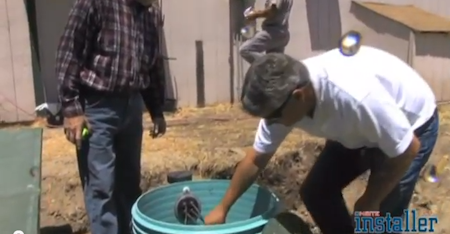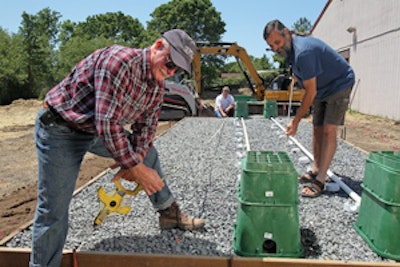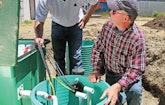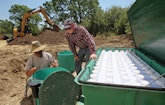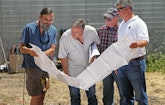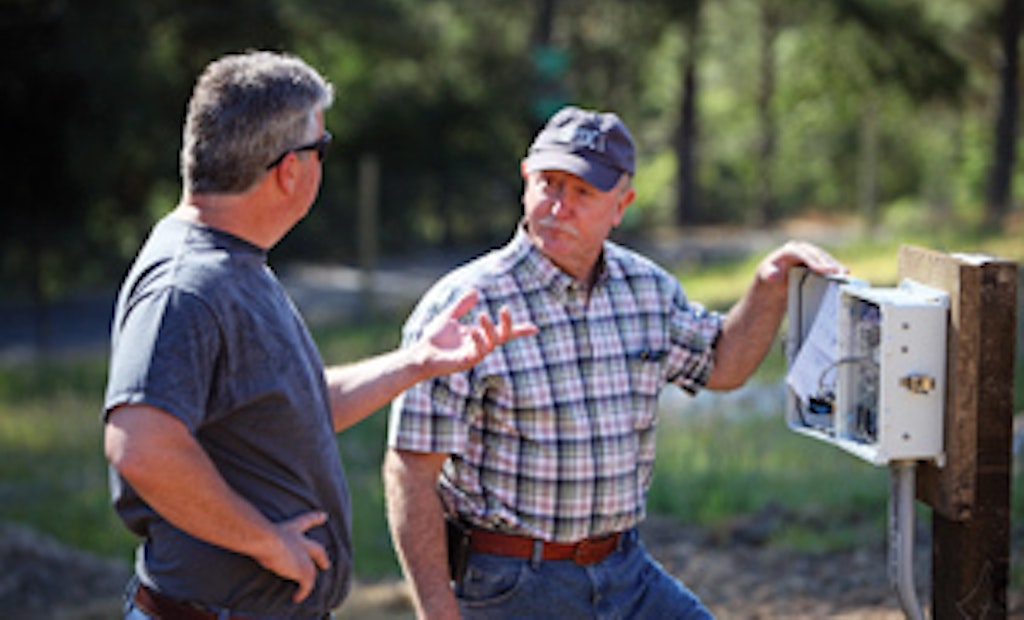
Interested in Education/Training?
Get Education/Training articles, news and videos right in your inbox! Sign up now.
Education/Training + Get AlertsAs a self-employed onsite system consultant, Mike Treinen personally conducts all the day-to-day activities of his business: marketing, communications, research, field work and reporting. In other words, “I’m the chief cook and bottle washer.”
But when a job kicks into gear, it’s his relationships with others that make it all happen. That’s true whether he’s performing a system inspection as part of a property sale, diagnosing a treatment problem, designing a new system, or teaching a class at his local community college.
“I attribute diversification in my work to my success and enjoyment of my 42-year-to-date career in the onsite wastewater field,” says Treinen, who works from his home base in Santa Rosa, Calif.
His experience is broad. After graduating from San Diego State University with a bachelor’s degree in biology, he became a registered environmental health specialist (REHS) and worked for more than 30 years as a county onsite regulator in San Diego and Sonoma Counties.
He retired in 2001 as land use supervisor for the Sonoma County Permit and Resource Management Department and soon afterward began his consulting business.
“So much for retirement – some of us just can’t give it up,” Treinen says. Diversity is what keeps his relatively new role interesting and rewarding, even amid tight economic times.
Treinen continues to give back to national and state industry associations, even as he serves a diverse and growing client base. For all he has learned in his career, he remains, in his own estimation, first and foremost a student. “The day I think I know it all is the day I take down my shingle,” he says.
Inspections
One of Treinen’s specialties is in property transfer, handling what are officially known as escrow inspections of onsite systems for real estate sales.
“When the housing market was strong, I was quite active in both inspection and repair design,” he says. “Even with the economic downturn, I have been quite busy with inspections on foreclosures and short sales, which I must say tend to be more complex and problematic. Often the house is vacant, the weeds are three feet high and no one knows anything about the system. Sometimes it can be tricky to figure out who you’re working for and who is paying the bill.”
Many real estate agents and lenders have learned they can depend on Treinen to provide quality service and detailed reports, and to help when necessary through the process if repairs or upgrades are needed.
“When I get a call from a real estate agent or system owner, I begin with a set list of questions about the property and system use,” Treinen says. “If I’m lucky, the system owner might even have maintenance and repair records.”
The next step is a diligent record search of the local health or building departments, where he hopes to find permit information, site and soil reports and, ideally, as-built drawings to help find those out-of-sight, out-of-mind underground components. By comparing the researched records with the client information, he learns a lot and can identify possible issues before even visiting the site.
Select pumpers are part of Treinen’s partnership team. “As an older retired guy, digging is not on the top of my list,” he says. “But I have a number of younger, hard-working pumper friends who not only help with the digging, but have the equipment to electronically locate other components, such as tanks, distribution boxes and lateral ends.
“Some of them even have video line investigation equipment to help identify problems like line blockages or damaged piping. And all the pumpers I work with know the importance of both pumping and cleaning the tanks I need to inspect.”
Solving problems
As part of a network of independent practitioners, Treinen calls on folks in the know for assistance when specialty work is needed. For example, his work with a pumper in investigating a struggling system might reveal a fairly simple fix that otherwise could have begun a long and unnecessary system repair or replacement.
“I fully support the KISS theory,” Treinen says. “I don’t want to see unnecessary, costly work done if a simple repair will do the job.” If and when he moves into a repair design mode, he brings in one of his installer backhoe friends, local regulators, and percolation technicians to assist with the site and soils evaluation.
“One thing I learned as a regulator is that the folks who specialize and are engaged in the same type of work every day see things that even someone else’s trained eye might overlook,” he says.
Fitting the site
Treinen feels he fills a niche in the design world. As a small-business operator working from a home office, he can offer lower cost options to folks who might not be able to afford a larger engineering firm. He can also take on smaller jobs that larger firms aren’t interested in.
When Treinen moves into the design mode, he follows a practice he calls the “feedback loop,” where he shares preliminary design drawings with his installers and service providers to get input on how he can improve the design from the viewpoints of installation and serviceability.
“I learn every day from these folks,” he says. “I want to make sure whatever I put my stamp on provides a long-term, sustainable solution for my client, as well as for public health and the environment.”
If a job requires advanced treatment, he taps associate designers who have experience with the options best suited for the site conditions. Treinen says this openness and willingness to reach out to partners has contributed to his success. It also helps that he has worked both sides of the fence as a regulator and private-sector professional.
Always learning
One thing Treinen learned early is that the biggest problem in the onsite field is the lack of public education. “In 1989, I approached Santa Rosa Junior College about teaching a community education program on onsite wastewater treatment systems,” he says. “They weren’t sure how it would fly, but they gave me a shot.
“The first class, I had 70 attendees, and it was a bit overwhelming. I’ve taught the class every year since, but I asked the college to put a 35-person cap on registration.” The class was originally created to increase the understanding of homeowners and Realtors about septic systems, however attendance became more diverse to include appraisers, engineering and contractor assistants, developers, and even attorneys.
That’s not the end of Treinen’s educational activities. He has been a Certified Trainer for the National Association of Wastewater Transporters (NAWT) for six years and team-teaches their Inspection and Operation and Maintenance (O&M) programs for the California Onsite Wastewater Association (COWA).
He is also a Certified Trainer for the Consortium of Institutes for Decentralized Wastewater Treatment’s O&M Service Provider training program. Treinen attends conferences and other educational events as often as possible.
“It’s my job to learn and to provide education at all levels, along with an aura of respectability and integrity that hopefully reflects on our industry as a whole,” he says. “For too long, the septic system industry has been the Rodney Dangerfield of development – it just don’t get no respect. I hope we are all trying to change that through constantly educating our customers, our staffs, and ourselves.”
Giving back
Treinen has long been a member of national industry associations, including the American Water Works Association and NAWT. In addition, he has held committee and executive committee positions with the California Environmental Health Association and COWA. He observes, “I truly believe what we teach in our O&M Service Provider Business and Industry Ethics section: that participating in professional associations demonstrates a level of commitment that reflects upon character and builds credibility.”
Treinen reports that while he was a contractor for the Environmental Impact Report to the California State Water Resource Control Board onsite wastewater policy process, he felt more productive volunteering as a participant with the Sonoma County Land Use Advisory Panel.
He believes the struggle in California’s 10-year effort to adopt statewide onsite policies once again is due to the lack of education of the various stakeholders. “I am hoping that more individual jurisdictions take the work-group approach and collaborate with local stakeholders,” he says. “Once again, the bottom-up versus top-down strategy will prevail, and we can get policies in place that truly make a difference.”
